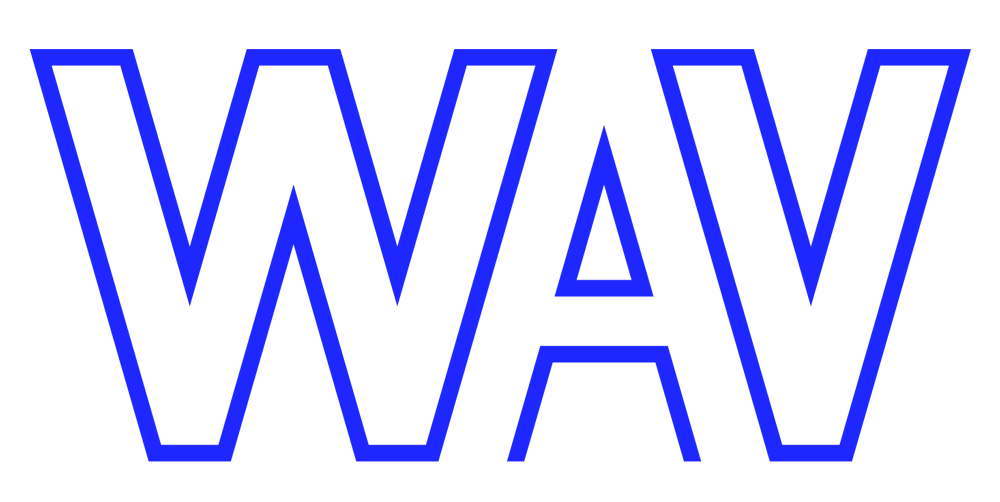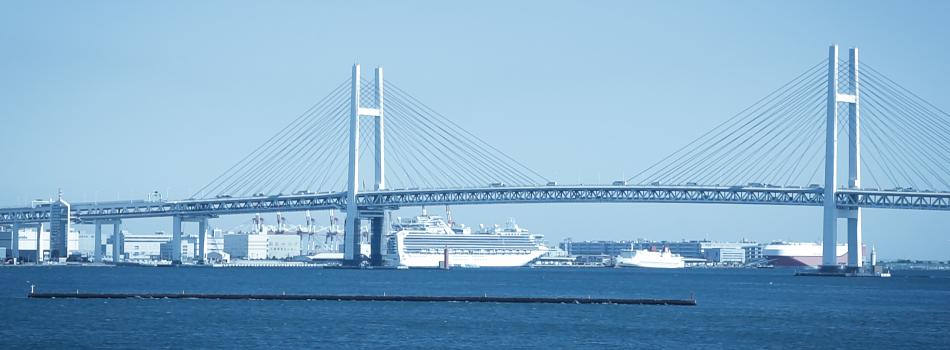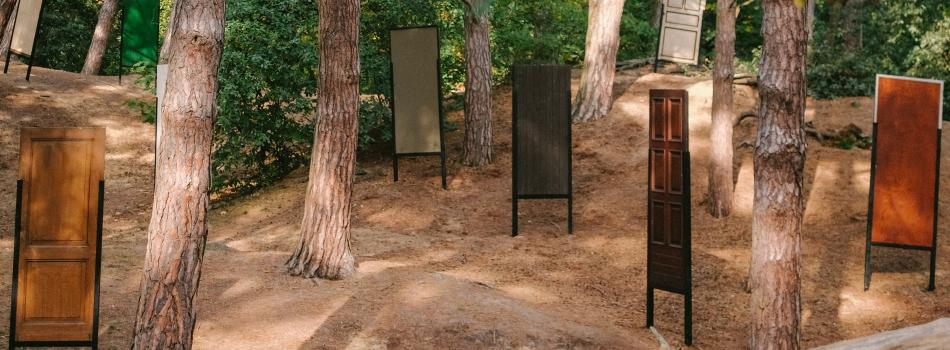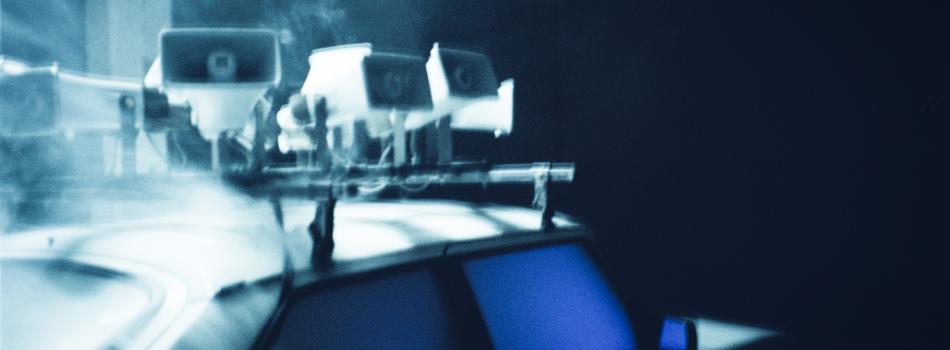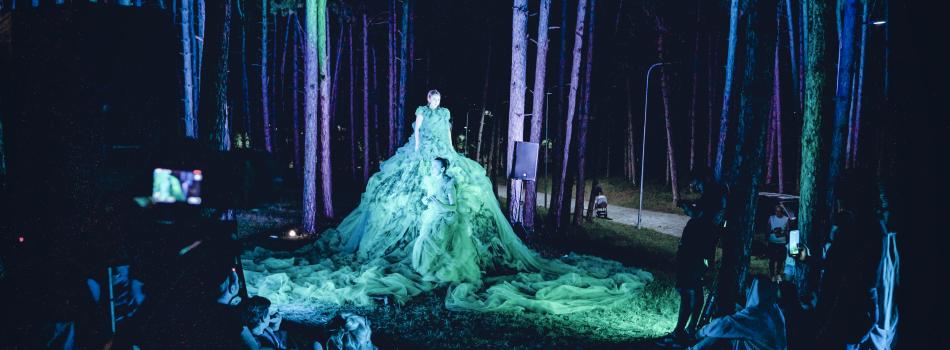OORtreders Festival is a 3-day happening for art and sound, at a unique location in the middle of the forests of North Limburg. Visitors and artists both local and from abroad come together with a shared focus on sound and music. A sense of experimentation and adventure is a must here. This fourth edition, subtitled ‘Sound in times of fluidity’, reflects on a society where almost everything is in flux and refuses to become consistent. Throughout the programme, various themes are explored at the intersection between ecology and society, with sound as the primary medium.
The festival programme includes concerts and performances, talks, and an expo-route with sound installations that can be experienced in- as well as outdoors.
Ahead of the festival, this year taking place 21 to 23 October, we had a small chat with Frederic Van de Velde, artistic coordinator, and Dimitri Vossen, communication coordinator.
WAV: Can you briefly explain the theme of this edition, and the rationale(s) for choosing this theme?
Frederic: During the first conversations with many of the artists and musicians in the programme, it immediately struck me how prevalent the theme of water was. And not just in a literal sense: there was also much reflection on its role in our society, and its many symbolic associations, which brought us to the central theme of ‘fluidity’. I think it’s a concept that defines the times we live in. It immediately brings up visions of climate change and its disastrous consequences. But it is also present in phenomena like the Covid pandemic, which rapidly spread across all borders like an uninterrupted stream. In doing so it has also made major inequalities in our world extra visible.
But fluidity is also a common tactic in the growing social resistance to our increasingly rational and data-driven society. Just think of the slogan that was adopted from martial artist Bruce Lee during the Hong Kong protests: “Be Water!”. And finally, our daily lives are dependent on multiple networks of streaming waves and signals, an invisible liquid architecture. This includes sound moving through the air we breathe – which brings us full circle.
WAV: How have different artists and musicians interpreted this? Were there any surprises or unexpected creations coming out of this?
Frederic: Like I said, the concept emerged as a common thread while the programme spontaneously came together. Hardly anyone was explicitly asked to work around the theme of fluidity. All the artists and musicians in the programme touch on it in their very own way: Lotte Nijsten & Gillis Van Der Wee’s documentary project that started on an oil rig in the North Sea, the piano pieces by Frederik Croene that emerged from Karl Van Welden’s film shots of cruise ships that came to a standstill at the beginning of the Covid crisis, Hans Beckers’ DIY instruments where different types of sand flow from hourglasses into bowls.. there is a lot of variety, and yet there is also a very strong feeling of coherence.
WAV: What concert(s) or performance(s) are you personally most looking forward to or most curious about and why?
Frederic: Something I am personally very much looking forward to is Méryll Ampe’s performance in the Sint-Niklaas church, but the programme is so diverse that it is difficult to really pick out one performance. To me, all the pieces are connected, like a book that can be read in different directions. So I’m especially curious to see the big picture that will transpire when the last piece of the puzzle falls into place after the very last performance on Sunday evening. Time and place play an important role in the programme, so I urge everyone to become a part of it as much as they can!
Dimitri: I am very curious about violin player Mia Zabelka’s ‘Quantum Noise’ performance with visuals by Epitaten and Conny Zenk on Friday, as well as Donika Rudi’s ‘Lament of the Earth’ we present on Saturday together with our partner C-TAKT. I am partial to these kinds of immersive audiovisual spectacles. Also, I am eager to see what Caroline Coolen and EC Band will come up with for the closing show.
WAV: What should the audience not miss? Or rather, what would they possibly miss, if they are not very attentive, and so we should point these out to them?
Frederic: There is an extensive programme, and in addition to the live performances there is a great expo route to be discovered. I want to advise anyone who plans a visit to make enough time and space to see – and even more importantly: hear – all the works. I’ll throw in an extra ‘hidden gem’ tip for all the foodies out there: on the way from Dommelhof to CC Palethe, stop by bakery Kwanten van Esch for a pastry treat – it really is the best in town and far beyond.
Dimitri: It will hardly be easy to miss, but Sandeep Bhagwati’s concert on Friday night promises to be an opening in grand style. He is bringing no fewer than 12 musicians and word artists for an exclusive Dutch-language performance of his radio play ‘Drenkelingenliederen’ (‘To Sing While Drowning’, original: ‘Beim Ertrinken zu Singen’). They will spread out all over the domain of Het Klankenbos, and lots of traditional instruments from all over the world will be seen and heard: the pipa (China), the tar (Persia), tablas (India), duduk (Armenia) and our local musician Jan Verheyen on the carillon. I think it will be a unique and impressive experience.
WAV: At which permanent, previously installed work in Het Klankenbos do you like to linger over and over again and why?
Frederic: For me, Pierre Berthet’s ‘Houses of Sound’ best embodies the spirit of Het Klankenbos. It forces you to come to a halt in the park, and listen. To the work itself, of course, but also to the environment and your own position in it. Go and listen for yourself. (Definitely also worthwhile in the evening or at night, for those staying overnight in Pelt).
Dimitri: I seem to have a special connection with the ‘Doors of Listening’, a participatory work that was created participatively. It is an arrangement of 12 physical doors on a slope in the forest, and when you put your ear to each door you can hear a story, a song, or another sound recording by refugees who stayed in the Red Cross shelter of Overpelt. We also published a very nice booklet with images and texts on the project. I also regularly eat my lunch sandwiches by the reed pond of ‘Aandacht’, the most beautiful spot in the forest as far as I am concerned.
WAV: Is the local community involved in the festival, and how?
Dimitri: And how! We really paid a lot of attention to the local community. After all, they are our first and primary audience. All residents in the immediate vicinity of Het Klankenbos will receive an entrance ticket to come and experience the festival. For this reason, we have also chosen to collaborate with the CC Palethe in Overpelt, where part of our expo is on display, and we also hope the community will show up and be surprised by the performances in the church.
Pelt is also very present in the programming. As mentioned, some local artists will take part in the opening concert on Friday. The next day at 9AM there is a parade featuring a number of brass players from around Pelt, a project by artist Amber Meulenijzer. On Saturday evening, the chillout beats of the local DJ collective ‘Deep Space Series’ will vibrate through Het Klankenbos. On Sunday morning, all local families are welcome to attend a free children’s film programme curated by filmmaker Marie-Pierre Bonniol. And on Sunday evening, the festival will conclude with an improvisation by visual artist Caroline Coolen (her work ‘Porcocrates’ is in a prominent spot in town) and the musical duo ‘EC Band’. Co-hosted by the Pelt arts organisation Off, Off, Off, this will take place in the studio of Lucas Pellens, a long-time pivotal figure in the local scene.
WAV: What fluid music tracks or sound pieces are you currently playing ‘on repeat’?
Frederic: When I was talking to an artist friend from Brussels about the festival theme, she referred me to Eliane Radigue’s ‘Occam Ocean’ pieces. These ended up being important works for me within the framework of this festival. In these pieces, the performers’ personal technique and their specific relationship to their instruments act as compositional material. To this end, she has selected musicians who have developed an individualistic, creative approach to their instrument; the resulting compositions are specific to those performers, rather than to their instrument. All the themes in the Occam pieces are inevitably linked to water. According to Radigue, “it is the element that moves through them, the image of life, life in its fluidity, like the flow of blood”.
WAV: What does the medium of radio, in these times, mean to you?
Frederic: While we are inundated with images every day, I think radio is able to take on an important connecting role and create new communities, or strengthen existing ones. It is also an engaging way to reflect on the endless possibilities of sonic information and its transformation. For me, radio possesses the ability to create new realities by transferring the soundscape around us, as well as the soundscape within ourselves, to others. It can open portals to other realities and to the experiences of others, transmuted over both short and long distances.
Thank you for the interview!
[Interview by Daphné ]
